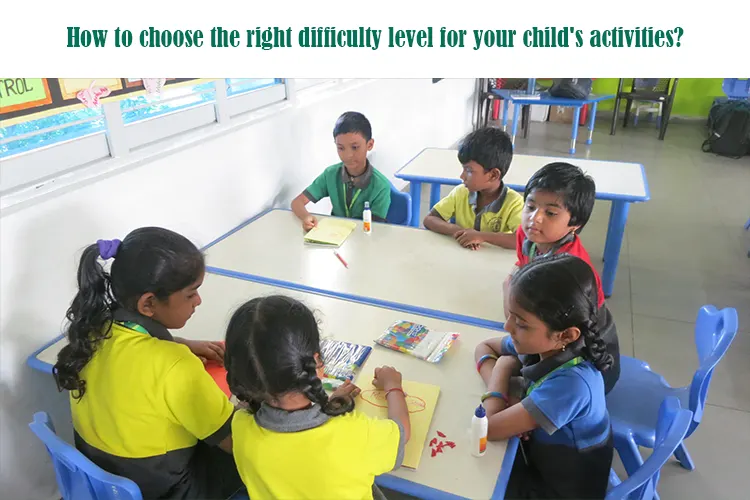m level of challenge for a student. They can recognize whether a child needs additional stimulation or when it’s time for him to sit back a little.
- A wide variety of activities:
Day-cum-boarding schools in India offer different types, from academically rigorous to artistic to the sports domain. This variety helps parents and educators directly pinpoint activities that match the child’s interests and abilities.
- Periodic feedback:
Schools have very advanced continued assessments and feedback loops. Here it is not only assessing progress on academic bounds but also needs to keep track of the emotional and social fitness of the child. Parents should plan regular feedback mechanisms, such as reports and parent-teacher meetings, enabling modification of the difficulty level of activities.
Involving your child in the decision-making process
- Sit down with your child and set both short-term and long-term goals. Discuss what they hope to achieve through each activity.
- Teach your child to self-assess. After completing an activity, ask them what they found challenging and what they enjoyed. This reflection builds self-awareness and informs future choices.
- Provide different options. When kids are free to choose, they are more likely to engage and throw themselves into the tasks they select.
- Encourage discussions regularly about progress and setbacks. Help your child understand that setbacks are a natural part of learning and can lead to growth when approached with the right mindset.
Finding a healthy balance between effort and comfort
Finding the right level of difficulty is not solely about achieving quality in academics or skills. It is also a question of how well you can balance efforts with your child’s well-being. Too many difficult tasks may overload your child to the point of burnout. Too few challenges may cause your child to be bored. Here are some more things to consider for managing the overload:
- Scheduled breaks:
Ensure your child has time to rest between tasks. Downtime is essential for creative ideas and stress relief.
- Grow a positive outlook:
Create an environment in which challenges are viewed with positivity. A desire to learn and grow, rather than as hindrances or obstacles to purpose. Recognition for effort over giftedness is more important. Please help your child appreciate that practice is what leads to mastery.
- Watch your child’s stress level:
Observe the signs of anxiety or stress. In the event that they appear overwhelmed, it is suggested to pull back for a while. Start gradually to move forward in the work that is causing stress in your child.
- Avoiding overemphasis on social or academic:
A well-balanced schedule must include social, physical, and academic activities to prevent extreme emphasis on one area. Day-cum-boarding schools in India are generally best at providing balanced programs where children’s overall development can occur.
Practical steps for parents
Practical steps that parents can follow for appropriate treatment levels of activities are as follows:
1. Know the child’s current skills and interests:
The first task is the honest assessment of the capabilities and preferences of your child’s subjects or activities that attract him, in which he shows distinction.
2. Consult teachers:
Share your ideas with teachers, counselors, or tutors involved in your child’s development. Their suggestive value may prove helpful in identifying the proper challenge to be set.
3. Break down into small, reachable goals:
Divide activities into smaller steps. By direct breaking, the challenging task will be made a little less daunting, and benchmarks will be checked for progress.
4. Ask for feedback:
Ask them frequently what the progress made was. Are they enjoying it, or are they confident or overwhelmed by it?
5. Be flexible:
Bear in mind that a child’s challenges may change from time to time. What worked this day may require some adjustments another day as he grows up.
6. Balanced nutrition:
Always try to balance positive challenges with rest, learning with play, and academics with non-academic activities.
Establishing an appropriate difficulty level for your child’s activities is an ongoing endeavor that requires thoughtful observation. It needs clear communication and adaptability. Parents should aim to create a balance where challenges promote development without causing frustration or exhaustion. Engaging with education professionals, consultants, counselors, or institutions like day-cum-boarding schools in India can assist parents in creating this equilibrium more effectively. DPS Warangal School offers a blend of observational insights, structured assessments, and personalized guidance. This approach enables young learners to engage in tasks that are both stimulating and manageable.


